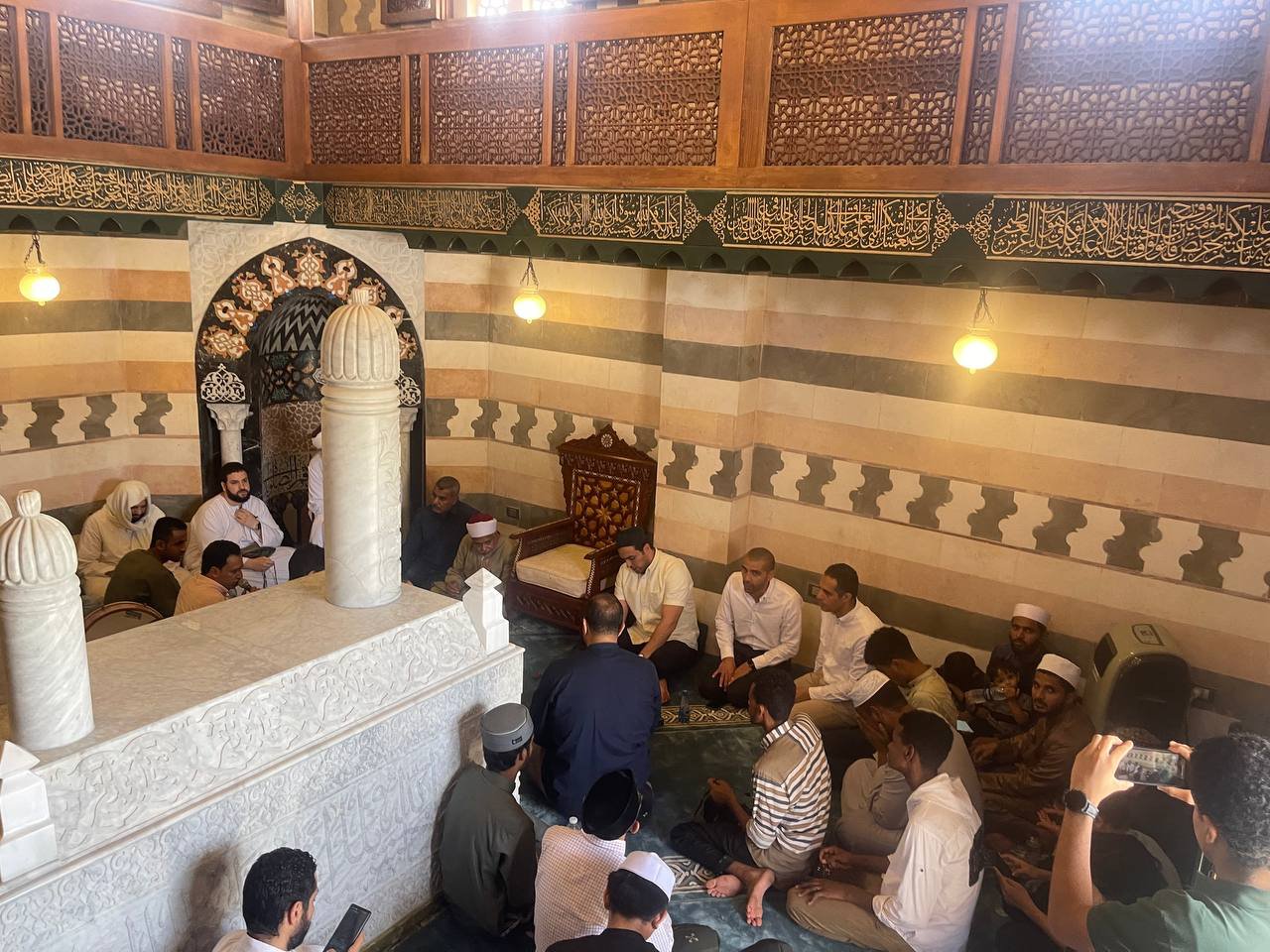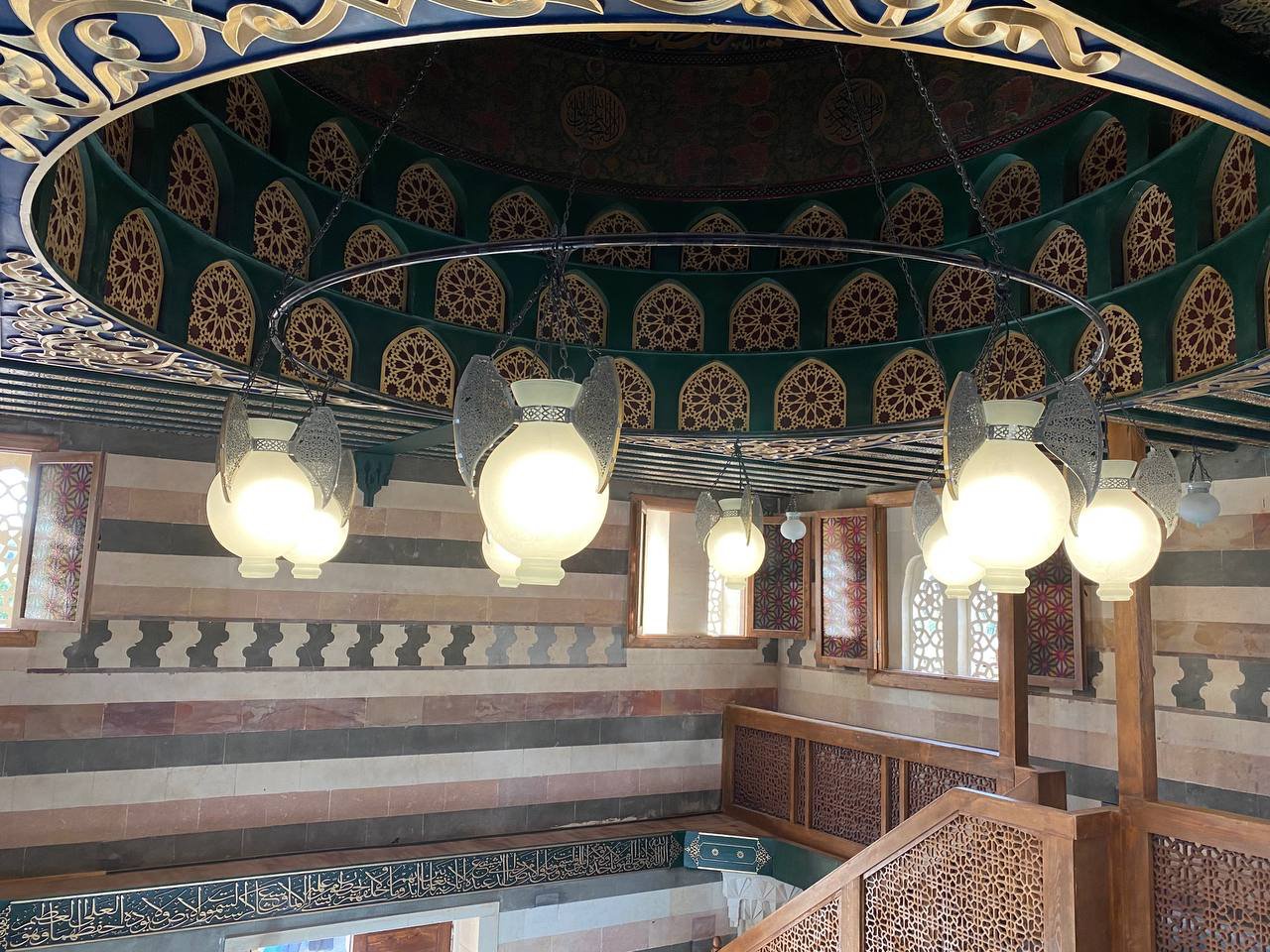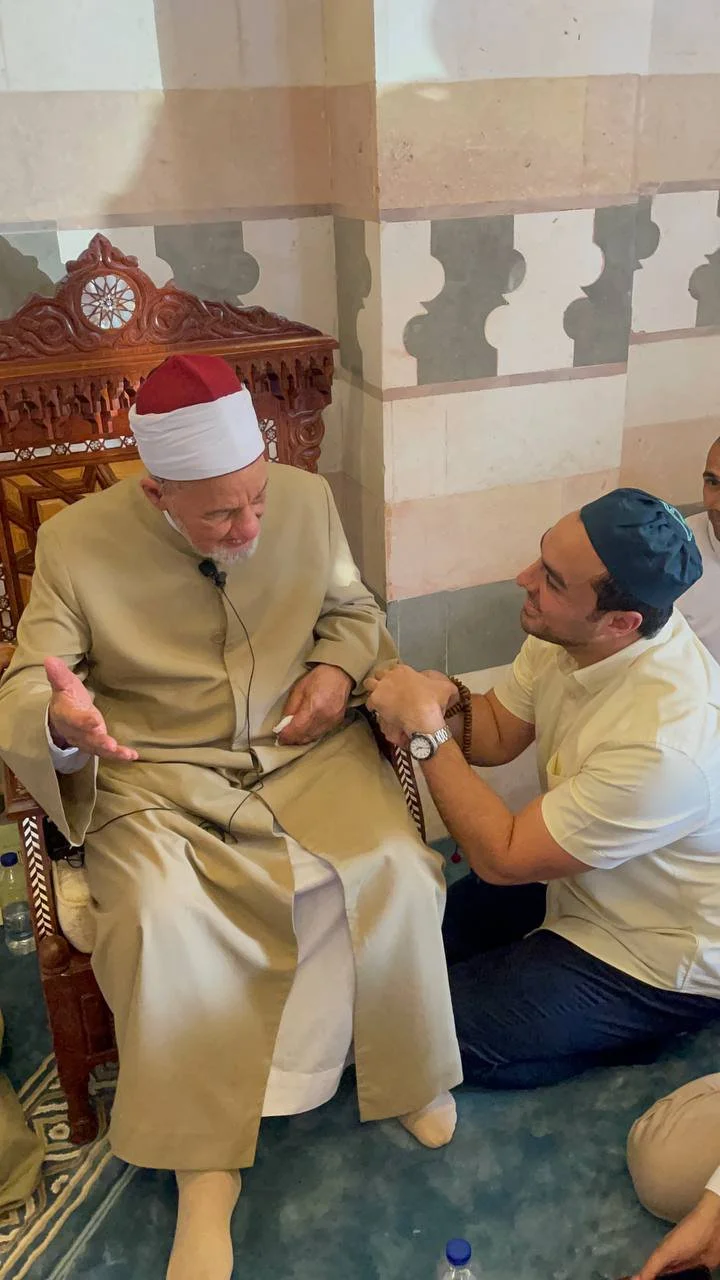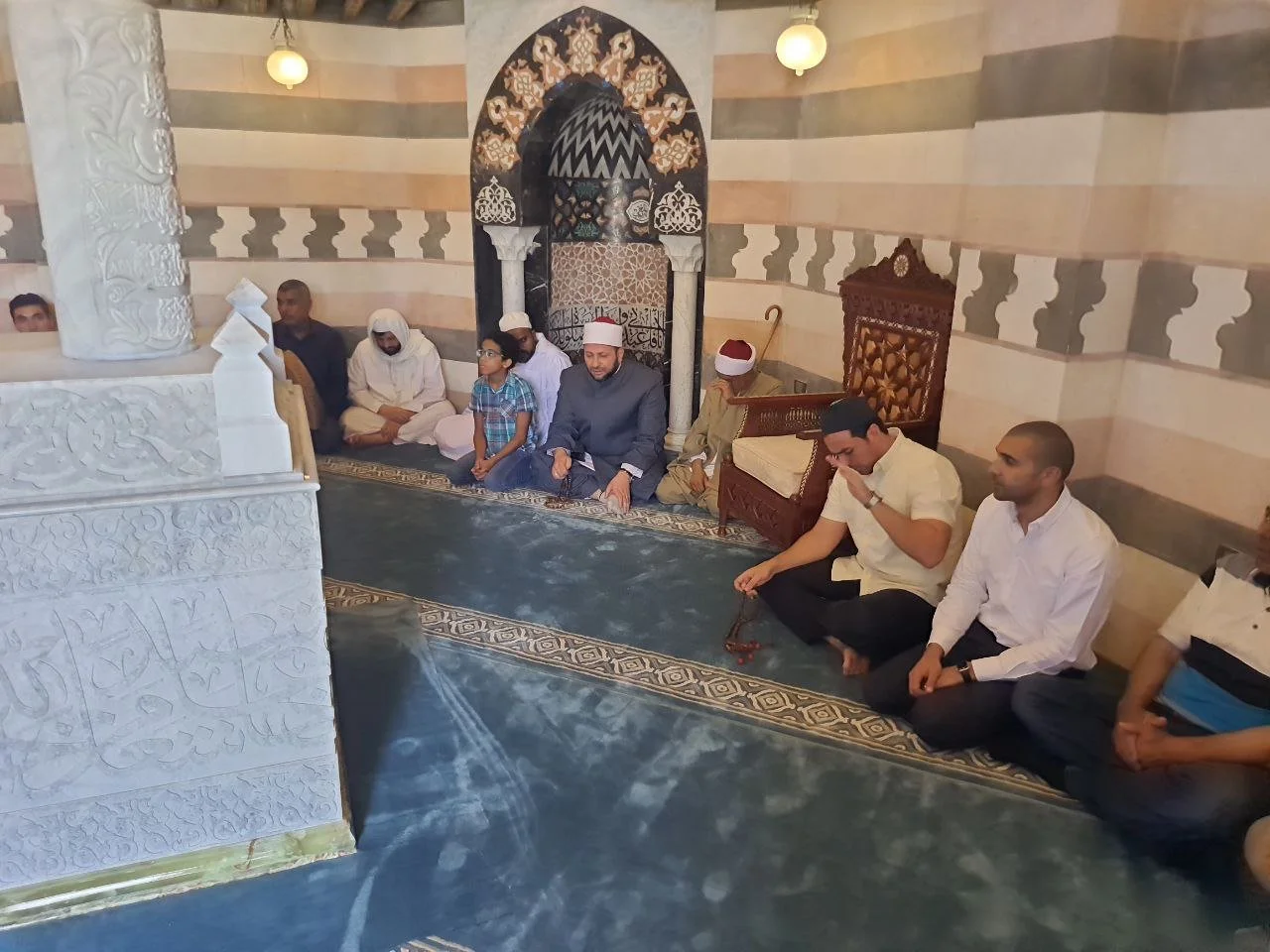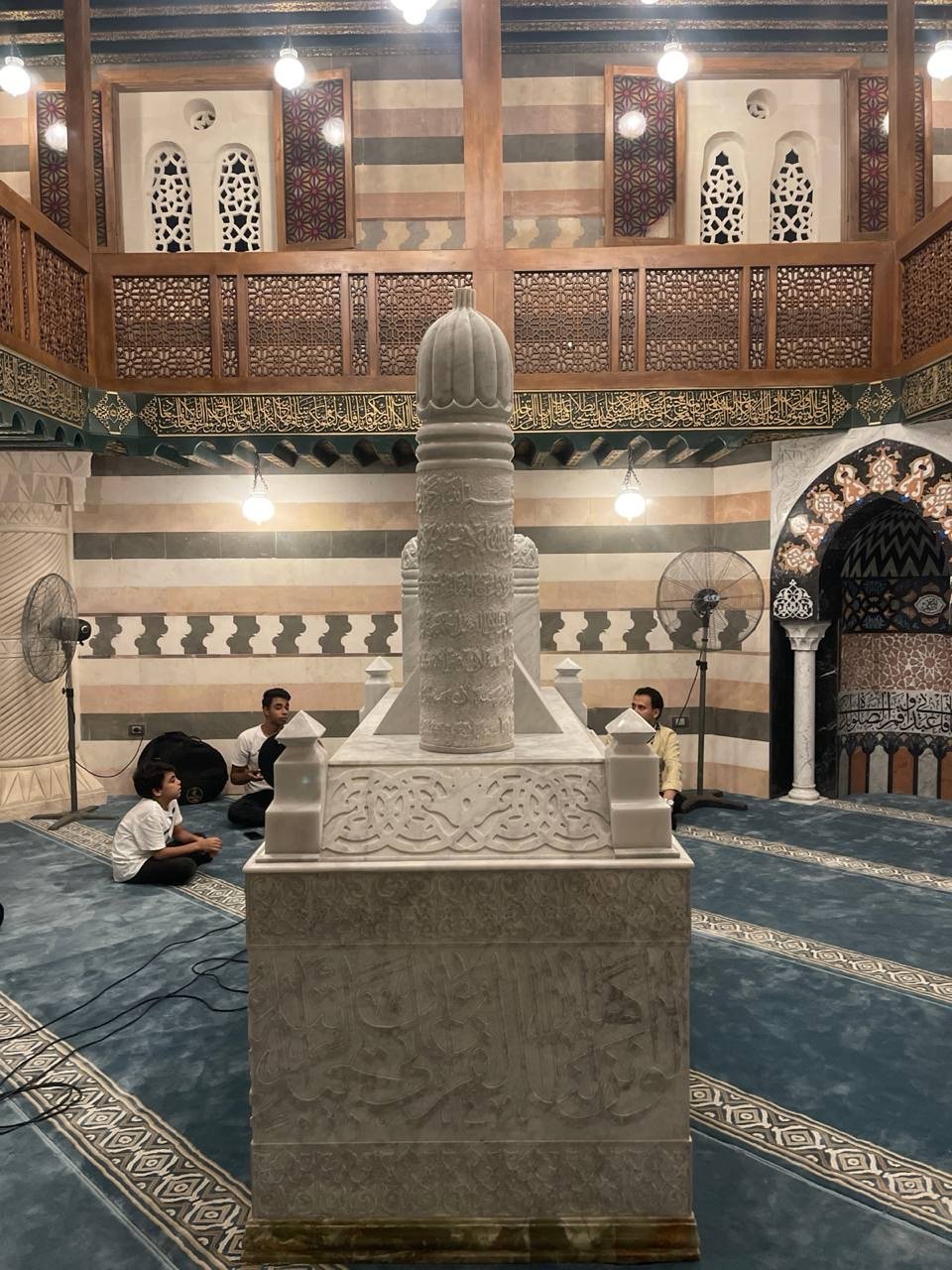A Dome for the Ages: Honouring Ibn Hajar al-Asqalani in Cairo
Reading time: 4 minutes
A Monumental Tribute in Cairo
In July 2024 (Dhu al-Ḥijjah 1445), Cairo bore witness to the unveiling of a monumental tribute to one of Islam’s most influential scholars. The Dome and Mausoleum of Shaykh al-Islam al-Hafiz Abu al-Fadl Ibn Hajar al-Asqalani was unveiled, an architectural and spiritual landmark that honours a scholar whose legacy has shaped Islamic thought across centuries.
Constructed with authorisation from Egypt’s Ministry of Endowments, the project was led by the Inarat Foundation for Revival and Renewal in collaboration with The Classical Institute, under the auspices of its Founding Dean, Dr Badreldeen Ismail al-Husayni. This partnership reflects a commitment to both tradition and reform, celebrating the past with the eyes of the present.
“Architecture as homage — to knowledge, to tradition, to a civilisation rooted in refinement.”
Rooted in the Mamluk World
The architectural design draws deeply from the grandeur of the late Mamluk era, the very world Ibn Hajar Asqalani inhabited. Flourishing between the 13th and 16th centuries, Mamluk architecture reached its artistic peak through geometric elegance, towering domes, muqarnas, monumental arches, and refined stucco and calligraphic detailing.
The dome and mausoleum were built not merely as a resting place, but as a space of resonance. The design incorporates:
Ornate domes echoing Cairo’s skyline of classical learning
Mihrabs of quiet dignity and fine carving
Latticework and calligraphy harmonising the divine and the intellectual
These elements do not simply decorate, they speak. They whisper history. They frame knowledge. They stir reverence.
“This is not merely a grave. It is a living memory carved in stone, where devotion meets design.”
A Sanctuary of Learning
More than a mausoleum, the site stands as a sanctuary of learning. Scholars, students, and seekers from around the world are drawn to reflect, remember, and re-root themselves in the heritage Ibn Hajar Asqalani represents.
The interior of the dome features a masterful blend of tradition and craft:
Intricate geometric compositions
Deeply considered prayer niches
A humble wooden chair, simple, scholarly, sincere
Here, art meets purpose. The architecture is not only to behold but to learn within.
A Sacred Inauguration
The inauguration was marked by the honourable presence of Professor Shaykh Hasan al-Shafi’i, a towering figure in Islamic philosophy and the beloved teacher of Dr Ismail. A scholar of rare breadth and humility, Professor al-Shafi’i symbolises continuity in a world that too easily forgets.
His presence at the ceremony did not merely validate the project, it rooted it in the living chain of Islamic scholarship. It was a reminder that we do not build monuments to nostalgia; we build them to carry wisdom forward.
Architectural Harmony: A Revival of Meaning
Every element of the mausoleum, from the gilded dome to the calligraphy-woven mihrab, was carefully overseen by Dr Ismail and his students. The result is a structure that represents not only a scholar's legacy, but a school of thought, a tradition lovingly restored.
The mihrab, in particular, is a centrepiece: a profound work of Islamic art. Detailed yet serene, it embodies the principles of worship, scholarship, and humility. The structure is firmly rooted in classical Islamic craftsmanship, yet utilises modern materials and techniques to ensure durability for generations to come.
“To build forward, we must first remember. And to remember beautifully.”
Legacy and Reform in Harmony
This project is more than a monument. It is a declaration: that heritage and reform need not be in tension. One can honour the past while building for the future.
It embodies:
Tradition: Reviving Mamluk craftsmanship, honouring Ibn Hajar’s towering legacy
Innovation: Utilising modern techniques for preservation and sustainability
Growth: Inspiring reverence, education, and connection
Learning: Establishing the site as a hub of scholarship and intellectual renewal
A Light for the Future
The Dome and Mausoleum of Shaykh al-Islam Ibn Hajar al-Asqalani stands as a beacon, of scholarship, beauty, and cultural memory. It is a quiet rebellion against forgetfulness. A revival of meaning. A gift to future generations.
“More than stone and script - this is a revival of meaning, a reawakening of a shared intellectual past.”




